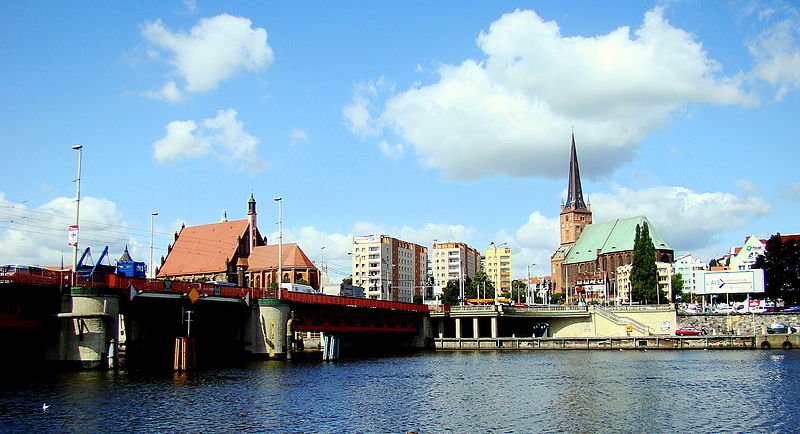 Szczecin, Poland
Szczecin, PolandSource: https://commons.wikimedia.org/wiki/File:0907_Most_D%C5%82ugi_Szczecin_SZN_7.jpg
Author: Mateusz War

Szczecin (German: Stettin) is a city on the northwestern part of Poland. It covers 301 sq km (116.2 sq mi) and has a population of 406,000 (2011 estimate), within a metropolitan area of 777,000 people.
Szczecin is the 7th most populous city in Poland. It is located on the banks of the Oder River, to the south of the Bay of Pomerania. It is the provincial capital of West Pomeranian Voivodeship, and the main seaport for Poland on the Baltic Sea - that despite it being 65 km (40 miles) from the sea. A series of lakes and lagoons link Szczecin to the Baltic Sea while the Oder River links it to Berlin, Germany.
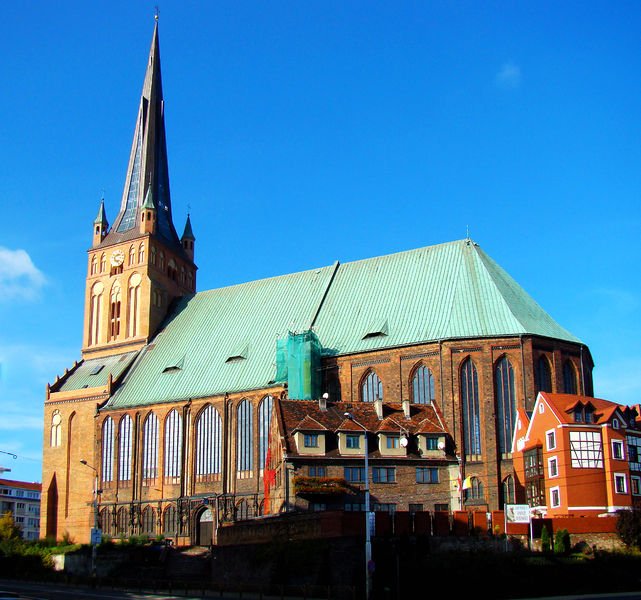 Cathedral of St James, Szczecin
Cathedral of St James, SzczecinSource: https://commons.wikimedia.org/wiki/File:0910_Bazylika_archikatedralna_%C5%9Bw_Jakuba_Szczecin_2.jpg
Author: Mateusz War

Szczecin had its beginnings as a small fishing village in the 9th century. By the 10th century the Polish ruler Mieszko I conquered Szczecin and added it to Poland. From then on, the city has been ruled by Poland, the Holy Roman Empire and other powers. Szczecin prospered when it joined the Hanseatic League, which helped it increase its trade, based on herrings, grains and timber.
Szczecin was occupied by Sweden following the Treaty of Stettin in 1630. During Swedish rule, it suffered raids and wars from neighboring powers. Furthermore, the Black Death epidemic in 1709 fell a third of its population. In 1720, Sweden was forced to cede it to Prussia when it was defeated in the Great Northern War.
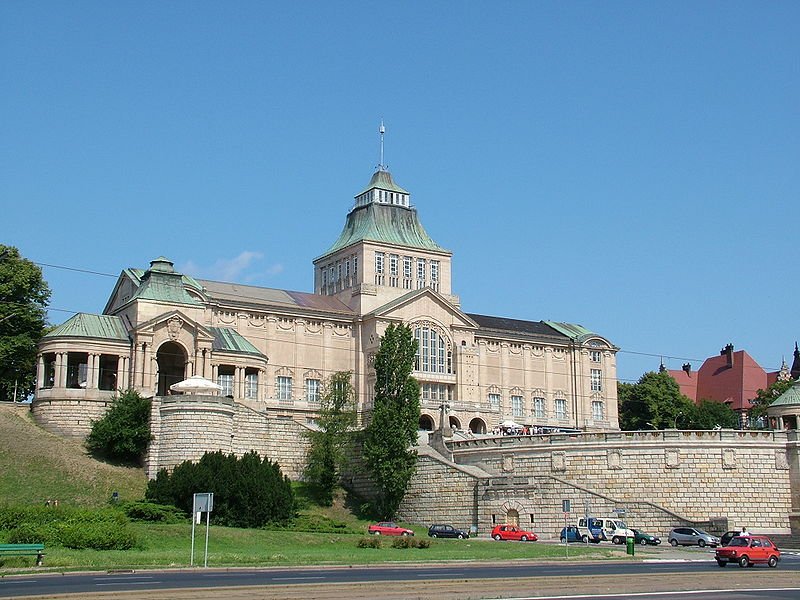 Szczecin Maritime Museum
Szczecin Maritime MuseumSource: https://commons.wikimedia.org/wiki/File:PolandSzczecinSeaMuseum.JPG
Author: Horvat

Under Prussia, Szczecin - then known as Stettin - developed into a major seaport. It began to industrialize even as the surrounding countryside remained agrarian. Between the First and Second World War, Szczecin was the most important German port on the Baltic Sea, and the third largest behind Hamburg and Bremen.
During the Second World War, the Jews in Szczecin were sent to concentration camps, their properties seized. Allied bombings in 1944 destroyed much of the city. In April 1945, the Nazis issued an evacuation order on the city, and its German population fled west. When the city was captured by the Red Army on 26 April, it was almost deserted.
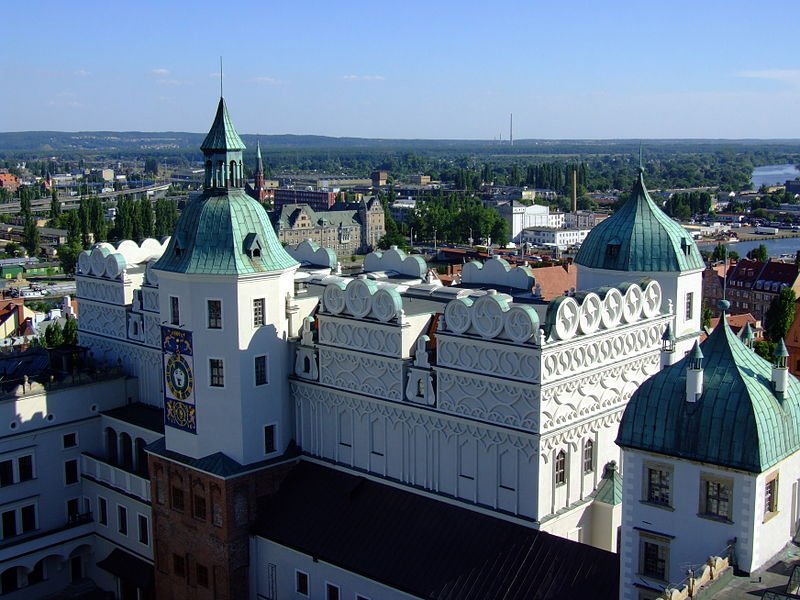 Szczecin Castle
Szczecin CastleSource: https://commons.wikimedia.org/wiki/File:Zamek_Ksiazat_Pomorskich_w_Szczecinie_(widok_z_wiezy).jpg
Author: Dr benway

After the war, Szczecin was given to Poland. Poles moved in to occupy the now deserted city, the majority coming from Central Poland, along with Ukrainians and Poles from areas annexed by the Soviet Union. Today Szczecin is a city that has been reconstructed from the devastation of World War II.
The post-war Polish communist government wanted the city to reflect an old Polish character. As no such architectural style exists, the Gothic and Renaissance styles were selected, partly because Renaissance architecture was used by the Griffin Dynasty, and is regarded as having elements of Polish character.
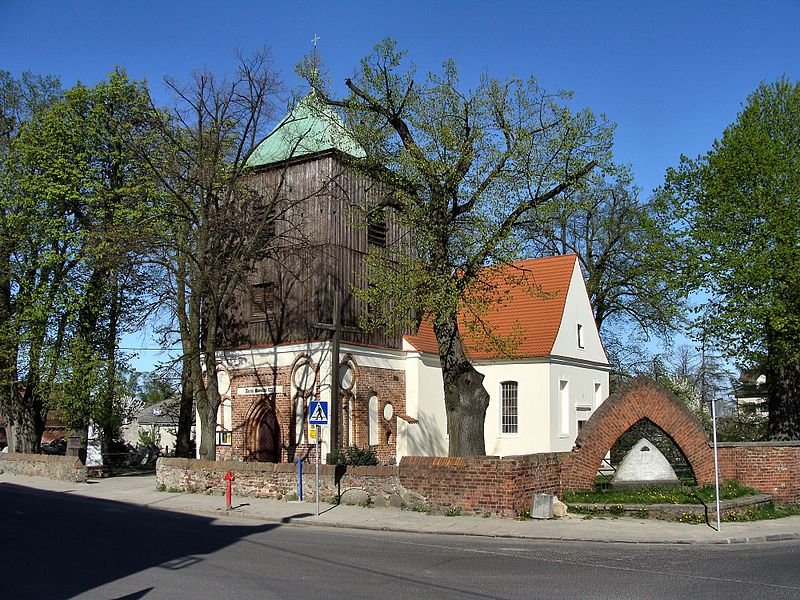 Church of the Immaculate Heart of Mary, Szczecin
Church of the Immaculate Heart of Mary, SzczecinSource: https://commons.wikimedia.org/wiki/File:Szczecin_ul_Nehringa_kosciol_a.jpg
Author: Kapitel

Visiting Szczecin
You can fly to the Szczecin-Goleniów Airport (SZZ), located almost 50 km from downtown. The airport is served by Ryannair from London Stensted, Dublin and Liverpool. LOT has flights between Szczecin and Warsaw. Arriving at the airport, your option to reach the city is limited to the taxi or, if you take LOT flight, you can use its minibus.Another option to reach Szczecin is to fly to Berlin, and then continue to Szczecin by minibus.
Sights & Attractions in Szczecin
- Cathedral of St James (Katedra św. Jakuba)
Roman Catholic cathedral that was rebuilt after the war, originally dating to the late 13th century. - Church of Saints Peter and Paul (Kościół św. św. Piotra i Pawla)
A red-brick late Gothic church located to the north of the Castle. - Gate of Prussian Homage
Formerly known as the Royal Gate, this is one of a pair of gates built when the city was under Swedish rule in 1726. - Loitz House
Late Gothic town house built by the Loitz family of bankers in 1547. - Szczecin Castle
Originally founded in the mid-13th century, the castle of the Dukes of Pomerania was rebuilt in 1575 in the Renaissance style. The basement of the east wing today houses the Castle Museum. - Szczecin Maritime Museum
Museum near the harbor providing details of the city's maritime heritage. - Szczecin National Museum
Museum with a large collection of artifacts from the history of Western Pomerania. - Szczecin Town Hall
Baroque building now housing the Szczecin History Museum. - Tower of the Seven Clocks
The only remnant of the medieval fortification of Szczecin. - Ulica Wały Chrobrego
A broad boulevard built when Szczecin was under Prussian rule.
 Latest updates on Penang Travel Tips
Latest updates on Penang Travel Tips
 Discover with Timothy YouTube Channel
Discover with Timothy YouTube Channel
 PG Food Channel
PG Food Channel
 Learn Penang Hokkien YouTube Channel
Learn Penang Hokkien YouTube Channel
 SojiMart Videos
SojiMart Videos
Latest from Discover with Timothy: Gurney Bay - what to see and do there
About this website

Hello and thanks for reading this page. My name is Timothy and my hobby is in describing places so that I can share the information with the general public. My website has become the go to site for a lot of people including students, teachers, journalists, etc. whenever they seek information on places, particularly those in Malaysia and Singapore. I have been doing this since 5 January 2003, for over twenty years already. You can read about me at Discover Timothy. By now I have compiled information on thousands of places, mostly in Peninsular Malaysia and Singapore, and I continue to add more almost every day. My goal is to describe every street in every town in Malaysia and Singapore.
Robbie's Roadmap
- Episode 1: Robbie's Journey to Financial Freedom
- Episode 2: Lost in America
- Episode 3: The Value of Money
- Episode 4: The Mentor
- Episode 5: The Thing that Makes Money
- Episode 6: The walk with a Billionaire
- Episode 7: The Financial Freedom Awakening
- Episode 8: Meet Mr Washington
- Episode 9: The Pizzeria Incident
Copyright © 2003-2024 Timothy Tye. All Rights Reserved.


 Go Back
Go Back